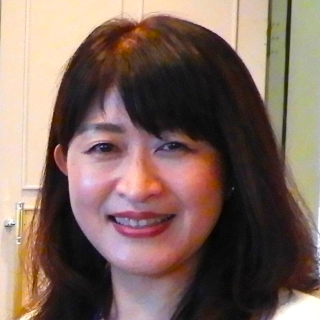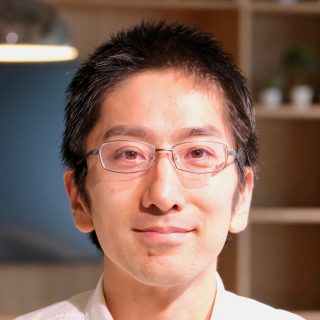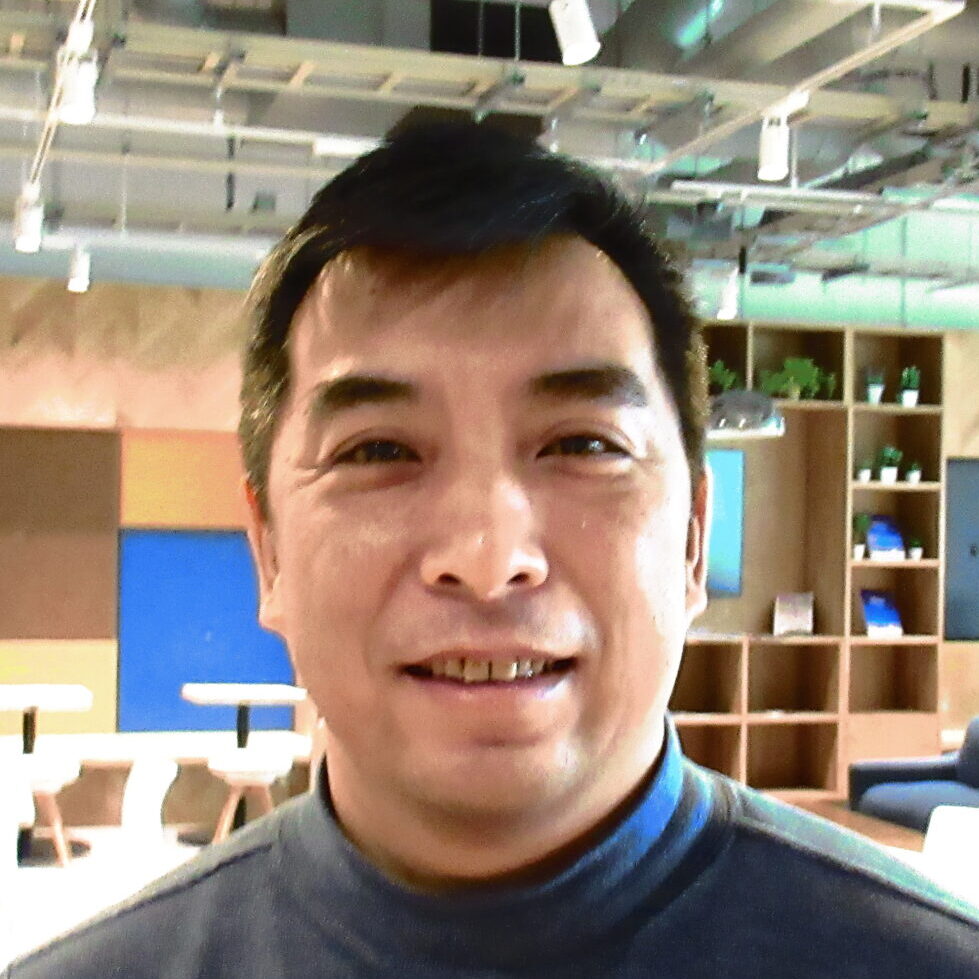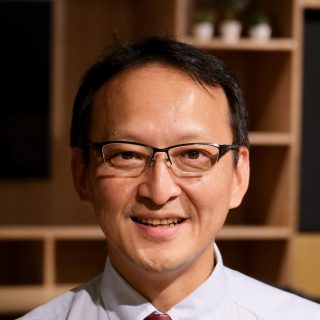About the Research
Research Theme
Development of novel diagnostic and therapeutic methods for cancer and innovative regenerative medicine by biomaterials
Keyword
Cancer, Cancer Stem Cells, Molecular Targeted Therapy, Genetic Diagnosis, Regenerative Medicine, Biomaterial
Research Outline
Through analysis of cell dynamics and bioreactivity using biomaterials, we aim to deeply understand diseases, develop new diagnostic and therapeutic methods for cancer, and establish innovative regenerative medicine for medical applications.
Representative Research Achievements
- Exosomes containing ErbB2/CRK induce vascular growth in premetastatic niches and promote metastasis of bladder cancer
Yoshida K, Tsuda M, Matsumoto R, Semba S, Wang L, Sugino H, Tanino M, Kondo T, Tanabe K, Tanaka S., Cancer Sci, 2019, 110, 2119-2132
DOI: 10.1111/cas.14080 - A Ca(2+)-dependent signaling circuit regulates influenza A virus internalization and infection
Fujioka Y, Tsuda M, Nanbo A, Hattori T, Sasaki J, Sasaki T, Miyazaki T, Ohba Y., Nat Commun, 2013, 4, 2763
DOI: 10.1038/ncomms3763 - Crk adaptor protein induced-phosphorylation of Gab1 on tyrosine 307 via Src is important for organization of focal adhesions and enhanced cell migration
Watanabe T, Tsuda M, Makino Y, Konstantinou T, Nishihara H, Majima T, Minami A, Feller SM, Tanaka S., Cell Res, 2009, 19, 638-650
DOI: 10.1038/cr.2009.40 - TFE3 fusions activate MET signaling by transcriptional up-regulation, defining another class of tumors as candidates for therapeutic MET inhibition
Tsuda M, Davis IJ, Argani P, Shukla N, McGill GG, Nagai M, Saito T, Laé M, Fisher DE, Ladanyi M., Cancer Res, 2007, 67, 919-929
DOI: 10.1158/0008-5472.CAN-06-2855 - Induction of p21(WAF1/CIP1) by human synovial sarcoma-associated chimeric oncoprotein SYT-SSX1
Tsuda M, Watanabe T, Seki T, Kimura T, Sawa H, Minami A, Akagi T, Isobe K, Nagashima K, Tanaka S., Oncogene, 2005, 24, 7984-7990
DOI: 10.1038/sj.onc.1208942
Related Research
- Press Release Shaping the future of mRNA based drug delivery
- Reduced pathogenicity of Omicron XBB.1.5 variant found to be due in part to a mutation-induced decrease in immunosuppression function
- Omicron BA.2.86 variant shown to have comparatively higher epidemic spreading ability but lower pathogenicity
- Press Release Cancer GPS method evaluates model tumor malignancy
- SARS-CoV-2 XBB revealed to be first variant derived from recombination of two other Omicron subvariants
- Shedding light on the evolutionary rules of SARS-CoV-2 Omicron variants
- Press Release Healing the brain: hydrogels enable neuronal tissue growth
- BA.4 and BA.5 subvariants of COVID show higher pathogenicity and higher resistance to natural and vaccine-induced immunity
- Press Release Understanding the virological characteristics of the SARS-CoV-2 Omicron BA.2 spike
- COVID Omicron variant exhibits decreased lung infection but higher transmissibility
- New method enables spatial detection of regulatory factors associated with cancer tumor invasion
- One step closer to artificial cartilage. Hydrogels show signs of triggering bone marrow stem cells to change into bone-like cells
- Mutation in COVID Delta variant associated with increased pathogenicity and fusogenicity
- Uprooting cancer: Hydrogel rapidly reverts cancer cells back to cancer stem cells
Publications
2025
-
Evolution of BA.2.86 to JN.1 Reveals that Functional Changes in Non-Structural Viral Proteins Are Required for Fitness of SARS-CoV-2
, M. Tsuda, N. Nao, K. Okumura, L. Wang, Y. Oda, Y. Mimura, J. Li, R. Hashimoto, Y. Matsumura, R. Suzuki, S. Suzuki, K. Yoshimatsu, M. Nagao, J. Ito, K. Takayama, K. Sato, K. Matsuno, T. Tamura, S. Tanaka, T. Fukuhara, G. P. J. G. Consortium, JOURNAL OF VIROLOGY, 2025, ,
DOI: 10.1128/jvi.00908-25
-
The Overlooked Stereoisomers of the Ionizable Lipid ALC315
, M. Tsuda, C. Zhu, S. Dehn, H. Hinrichs, N. Tsuji, H. Jin, H. Arase, S. Tanaka, B. List, J. Am. Chem. Soc., 2025, 147, 28595-28600
DOI: 10.1021/jacs.5c08345
-
Distinct Characteristics of Brain Metastasis in Lung Adenocarcinoma: Development of High-Confidence Cell Lines
, Z. Tanei, D. Wu, L. Wang, Y. Oda, M. Tsuda, S. Tanaka, Acta Neuropathologica Communications, 2025, 13(109),
DOI: 10.1186/s40478-025-02038-4
-
Mechanochemistry-Induced Universal Hydrogel Surface Modification for Orientation and Enhanced Differentiation of Skeletal Muscle Myoblasts
, Q. Mu, Y. Sun, Z. Ferdous, L. Wang, C. Chen, T. Nakajima, J. Gong, S. Tanaka, M. Tsuda, ACS APPLIED BIO MATERIALS, 2025, 8, 3144-3155
DOI: 10.1021/acsabm.4c01991
-
Hydrogel PCDME Creates Pancreatic Cancer Stem Cells in OXPHOS Metabolic State with TXNIP Elevation
, L. Wang, M. Tsuda, Y. Saito, T. Kubota, Y. Oda, S. Hirano, J. Gong, S. Tanaka, Biochemical and Biophysical Research Communications, 2025, 751, 151416
DOI: 10.1016/j.bbrc.2025.151416
-
SLC13A5 Plays an Essential Role in the Energy Shift to Oxidative Phosphorylation in Cisplatin-Resistant Mesothelioma Stem Cells
, H. Sugino, L. Wang, Y. Saito, J. He, Z. Tanei, Y. Oda, S. Tanikawa, M. Tanino, J. Gong, M. Tsuda, S. Tanaka, Pathology International, 2025, ,
DOI: 10.1111/pin.70001
-
Establishment of a Novel Method for Differentiating into Dopaminergic Neurons Using Charged Hydrogels
, S. Tanikawa, L. Wang, T. Nonoyama, Y. Oda, Z. Tanei, J. Gong, M. Tsuda, S. Tanaka, Biochemical and Biophysical Research Communications, 2025, 747,
DOI: 10.1016/j.bbrc.2024.151280
-
Tumor-Mimetic Hydrogel Stiffness Regulates Cancer Stemness Properties in H-Ras-Transformed Cancer Model Cells
, Y. Nie, L. Wang, J. Gong, S. Tanaka, M. Tsuda, Biochemical and Biophysical Research Communications, 2025, 743,
DOI: 10.1016/j.bbrc.2024.151163
-
Analysis of Synthetic Polymer Hydrogel-Based Generation of Leukemia Stem Cells
, Y. Oda, Y. Saito, T. Kuwabara, L. Wang, Z. Tanei, S. Hirabayashi, M. Tsuda, J. Gong, A. Manabe, S. Tanaka, Biochemical and Biophysical Research Communications, 2025, 744,
DOI: 10.1016/j.bbrc.2024.151149
2024
-
Virological Characteristics of a SARS-CoV-2-Related Bat Coronavirus, BANAL-20-236
, A. Plianchaisuk, S. Deguchi, H. Ito, N. Nao, L. Wang, H. Nasser, T. Tamura, I. Kimura, Y. Kashima, R. Suzuki, S. Suzuki, I. Kida, M. Tsuda, Y. Oda, R. Hashimoto, Y. Watanabe, K. Uriu, D. Yamasoba, Z. Guo, A. Jr, Y. Kosugi, L. Chen, L. Pan, Y. Kaku, H. Chu, F. Donati, S. Temmam, M. Eloit, Y. Yamamoto, T. Nagamoto, H. Asakura, K. Sadamasu, K. Yoshimura, Y. Suzuki, J. Ito, T. Ikeda, M. Nagashima, S. Tanaka, K. Matsuno, T. Fukuhara, K. Takayama, K. Sato, EBIOMEDICINE, 2024, 104,
DOI: 10.1016/j.ebiom.2024.105181
-
Involvement of SARS-CoV-2 Accessory Proteins in Immunopathogenesis
, T. Tamura, L. Wang, K. Mori, M. Tsuda, R. Suzuki, S. Suzuki, K. Yoshimatsu, S. Tanaka, T. Fukuhara, MICROBIOLOGY AND IMMUNOLOGY, 2024, 68(7), 237-247
DOI: 10.1111/1348-0421.13157
-
Virological Characteristics of the SARS-CoV-2 Omicron EG.5.1 Variant
, S. Deguchi, T. Nomai, M. Padilla-Blanco, A. Plianchaisuk, L. Wang, M. Begum, K. Uriu, K. Mizuma, N. Nao, I. Kojima, T. Tsubo, J. Li, Y. Matsumura, M. Nagao, Y. Oda, M. Tsuda, Y. Anraku, S. Kita, H. Yajima, K. Sasaki-Tabata, Z. Guo, A. Hinay, K. Yoshimatsu, Y. Yamamoto, T. Nagamoto, H. Asakura, M. Nagashima, K. Sadamasu, K. Yoshimura, H. Nasser, M. Jonathan, O. Putri, Y. Kim, L. Chen, R. Suzuki, T. Tamura, K. Maenaka, T. Irie, K. Matsuno, S. Tanaka, J. Ito, T. Ikeda, K. Takayama, J. Zahradnik, T. Hashiguchi, T. Fukuhara, K. Sato, G. P. J. G. Consortium, MICROBIOLOGY AND IMMUNOLOGY, 2024, 68(9), 305-330
DOI: 10.1111/1348-0421.13165
-
Caging Bioactive Triarylimidazoles: An Approach to Create Visible Light-Activatable Drugs
, A. Amrutha, S. Ishida-Ishihara, H. Dokainish, P. Hashim, R. Miyazaki, M. Tsuda, S. Tanaka, N. Tamaoki, J. Am. Chem. Soc., 2024, 146 (26), 18002-18010
DOI: 10.1021/jacs.4c04468
-
Akaluc Bioluminescence Offers Superior Sensitivity to Track in Vivo Dynamics of SARS-CoV-2 Infection
, H. Ito, S. Torii, L. Wang, R. Suzuki, S. Tsujino, A. Kamiyama, Y. Oda, M. Tsuda, Y. Morioka, S. Suzuki, K. Shirakawa, K. Sato, K. Yoshimatsu, Y. Matsuura, S. Iwano, S. Tanaka, T. Fukuhara, Iscience, 2024, 27(5),
DOI: 10.1016/j.isci.2024.109647
-
Virological Characteristics of the SARS-CoV-2 Omicron XBB.1.5 Variant
, T. Irie, S. Deguchi, H. Yajima, M. Tsuda, H. Nasser, K. Mizuma, A. Plianchaisuk, S. Suzuki, K. Uriu, M. M. Begum, R. Shimizu, M. Jonathan, R. Suzuki, T. Kondo, H. Ito, A. Kamiyama, K. Yoshimatsu, M. Shofa, R. Hashimoto, Y. Anraku, K. T. Kimura, S. Kita, J. Sasaki, K. Sasaki-Tabata, K. Maenaka, N. Nao, L. Wang, Y. Oda, H. Sawa, R. Kawabata, Y. Watanabe, A. Sakamoto, N. Yasuhara, T. Suzuki, Y. Nakajima, Z. Ferdous, K. Shishido, Y. Mugita, O. Takahashi, K. Ichihara, Y. Kaku, N. Misawa, Z. Y. Guo, A. Hinay, Y. Kosugi, S. Fujita, J. M. Tolentino, L. Chen, L. Pan, M. Suganami, M. Chiba, R. Yoshimura, K. Yasuda, K. Iida, N. Ohsumi, A. P. Strange, Y. Shibatani, T. Nishiuchi, S. Tanaka, O. Putri, G. Joas, Y. Kim, D. Yamasoba, K. Yoshimura, K. Sadamasu, M. Nagashima, H. Asakura, I. Yoshida, S. Nakagawa, A. Takaori-Kondo, K. Shirakawa, K. Nagata, R. Nomura, Y. Horisawa, Y. Tashiro, Y. Kawai, T. Ueno, C. Motozono, M. Toyoda, T. Ikeda, A. Saito, K. Matsuno, J. Ito, K. Sato, T. Hashiguchi, K. Takayama, T. Fukuhara, G. P. Genotype Phenotype Japan, Nat. Commun., 2024, 15,
DOI: 10.1038/s41467-024-45274-3
-
Structure-Changeable Luminescent Eu(III) Complex as a Human Cancer Grade Probing System for Brain Tumor Diagnosis
, M. Kono, Y. Yamaguchi, J. Islam, S. Shoji, Y. Kitagawa, K. Fushimi, S. Watanabe, G. Matsuba, A. Yamamoto, M. Tanaka, M. Tsuda, S. Tanaka, Y. Hasegawa, Scientific Reports, 2024, 14, Article number: 778
DOI: 10.1038/s41598-023-50138-9
-
A Case of Uterine Tumor Resembling Ovarian Sex Cord Tumor With Prominent Myxoid Features
, Z. Tanei, Y. Oda, S. Tanikawa, H. Sugino, Y. Ishida, M. Tsuda, Y. Gotoda, K. Nishiwaki, H. Yanai, T. Hasegawa, K. Nagashima, S. Tanaka, International Journal of Gynecological Pathology, 2024, 43, 41-46
DOI: 10.1097/pgp.0000000000000949
2023
-
Comparative Pathogenicity of SARS-CoV-2 Omicron Subvariants Including BA.1, BA.2, and BA.5
, D. Yamasoba, Y. Oda, J. Ito, T. Kamasaki, N. Nao, R. Hashimoto, Y. Fujioka, R. Suzuki, L. Wang, H. Ito, Y. Kashima, I. Kimura, M. Kishimoto, M. Tsuda, H. Sawa, K. Yoshimatsu, Y. Yamamoto, T. Nagamoto, J. Kanamune, Y. Suzuki, Y. Ohba, I. Yokota, K. Matsuno, K. Takayama, S. Tanaka, K. Sato, T. Fukuhara, G. P. J. Genotype Phenotype Japan, Communications Biology, 2023, 6, Article number: 772
DOI: 10.1038/s42003-023-05081-w
-
Convergent Evolution of SARS-CoV-2 Omicron Subvariants Leading to the Emergence of BQ.1.1 Variant
, R. Suzuki, K. Uriu, Y. Itakura, J. Zahradnik, K. T. Kimura, S. Deguchi, L. Wang, S. Lytras, T. Tamura, I. Kida, H. Nasser, M. Shofa, M. M. Begum, M. Tsuda, Y. Oda, T. Suzuki, J. Sasaki, K. Sasaki-Tabata, S. Fujita, K. Yoshimatsu, H. Ito, N. Nao, H. Asakura, M. Nagashima, K. Sadamasu, K. Yoshimura, Y. Yamamoto, T. Nagamoto, J. Kuramochi, G. Schreiber, A. Saito, K. Matsuno, K. Takayama, T. Hashiguchi, S. Tanaka, T. Fukuhara, T. Ikeda, K. Sato, S. Suzuki, M. Kato, Z. Ferdous, H. Mouri, K. Shishido, N. Misawa, I. Kimura, Y. Kosugi, P. Lin, M. Suganami, M. Chiba, R. Yoshimura, K. Yasuda, K. Iida, N. Ohsumi, A. P. Strange, D. Sauter, S. Nakagawa, J. Q. Wu, Y. Watanabe, A. Sakamoto, N. Yasuhara, Y. Nakajima, H. Yajima, K. Shirakawa, A. Takaori-Kondo, K. Nagata, Y. Kazuma, R. Nomura, Y. Horisawa, Y. Tashiro, Y. Kawa, T. Irie, R. Kawabata, R. Shimizu, O. Takahashi, K. Ichihara, C. Motozono, M. Toyoda, T. Ueno, Y. Shibatani, T. Nishiuchi, G. P. J. Genotype Phenotype Japan, Nat. Commun., 2023, 14, 2671,
DOI: 10.1038/s41467-023-38188-z
-
Virological Characteristics of the SARS-CoV-2 XBB Variant Derived from Recombination of Two Omicron Subvariants
, J. Ito, K. Uriu, J. Zahradnik, I. Kida, Y. Anraku, H. Nasser, M. Shofa, Y. Oda, S. Lytras, N. Nao, Y. Itakura, S. Deguchi, R. Suzuki, L. Wang, M. Begum, S. Kita, H. Yajima, J. Sasaki, K. Sasaki-Tabata, R. Shimizu, M. Tsuda, Y. Kosugi, S. Fujita, L. Pan, D. Sauter, K. Yoshimatsu, S. Suzuki, H. Asakura, M. Nagashima, K. Sadamasu, K. Yoshimura, Y. Yamamoto, T. Nagamoto, G. Schreiber, K. Maenaka, T. Hashiguchi, T. Ikeda, T. Fukuhara, A. Saito, S. Tanaka, K. Matsuno, K. Takayama, K. Sato, G. P. J. Genotype Phenotype Japan, Nat. Commun., 2023, 14, 2671
DOI: 10.1038/s41467-023-38435-3
-
Engineering of an electrically charged hydrogel implanted into a traumatic brain injury model for stepwise neuronal tissue reconstruction
, Ebisu, Y, Sedlacík, T, Semba, S, Nonoyama, T, Kurokawa, T, Hirota, A, Takahashi, T, Yamaguchi, K, Imajo, M, Kato, H, Nishimura, T, Tanei, ZI, Tsuda, M, Nemoto, T, Gong, JP, Tanaka, S, Scientific Reports, 2023, 13, (1), Article number: 2233
DOI: 10.1038/s41598-023-28870-z
-
Geometrical Analysis Identified Morphological Features of Hydrogel- Induced Cancer Stem Cells in Synovial Sarcoma Model Cells
, J. E. Clement, J. P. Gong, S. Tanaka, T. Komatsuzaki, M. Tsuda, Biochemical and Biophysical Research Communications, 2023, 642, 41-49
DOI: 10.1016/j.bbrc.2022.12.040
2022
-
Virological Characteristics of the SARS-CoV-2 Omicron BA.2 Subvariants, Including BA.4 and BA.5
, D. Yamasoba, T. Tamura, N. Nao, T. Suzuki, Y. Oda, S. Mitoma, J. Ito, H. Nasser, J. Zahradnik, K. Uriu, S. Fujita, Y. Kosugi, L. Wang, M. Tsuda, M. Kishimoto, H. Ito, R. Suzuki, R. Shimizu, M. M. Begum, K. Yoshimatsu, K. T. Kimura, J. Sasaki, K. Sasaki-Tabata, Y. Yamamoto, T. Nagamoto, J. Kanamune, K. Kobiyama, H. Asakura, M. Nagashima, K. Sadamasu, K. Yoshimura, K. Shirakawa, A. Takaori-Kondo, J. Kuramochi, G. Schreiber, K. J. Ishii, T. Hashiguchi, T. Ikeda, A. Saito, T. Fukuhara, S. Tanaka, K. Matsuno, K. Sato, G. P. J. Genotype Phenotype Japan, Cell, 2022, 185, 3992-4007.e16
DOI: 10.1016/j.cell.2022.09.018
-
Force-Triggered Rapid Microstructure Growth on Hydrogel Surface for On-Demand Functions
, K. P. Cui, Z. J. Wang, T. Matsuda, W. Cui, H. Kato, S. Namiki, T. Yamazaki, M. Frauenlob, T. Nonoyama, M. Tsuda, S. Tanaka, T. Nakajima, J. P. Gong, Nat. Commun., 2022, 13,
DOI: 10.1038/s41467-022-34044-8
-
Virological Characteristics of the SARS-CoV-2 Omicron BA.2.75 Variant
, T. Tamura, J. Zahradnik, S. Deguchi, K. Tabata, Y. Anraku, I. Kimura, J. Ito, D. Yamasoba, H. Nasser, M. Toyoda, K. Nagata, K. Uriu, Y. Kosugi, S. Fujita, M. Shofa, M. M. Begum, R. Shimizu, Y. Oda, R. Suzuki, H. Ito, N. Nao, L. Wang, M. Tsuda, K. Yoshimatsu, J. Kuramochi, S. Kita, K. Sasaki-Tabata, H. Fukuhara, K. Maenaka, Y. Yamamoto, T. Nagamoto, H. Asakura, M. Nagashima, K. Sadamasu, K. Yoshimura, T. Ueno, G. Schreiber, A. Takaori-Kondo, K. Shirakawa, H. Sawa, T. Irie, T. Hashiguchi, K. Takayama, K. Matsuno, S. Tanaka, T. Ikeda, T. Fukuhara, K. Sato, G. P. J. Genotype Phenotype Japan, Cell Host & Microbe, 2022, 30, 1540-+
DOI: 10.1016/j.chom.2022.10.003
-
Evaluation of the Context of Downstream N- and Free N-Glycomic Alterations Induced by Swainsonine in HepG2 Cells
, K. Sugiura, K. Kondo, Y. Yamamoto, Y. Kojima, Y. Ozawa, H. Yoshioka, N. Miura, J. H. Piao, K. Okada, H. Hanamatsu, M. Tsuda, S. Tanaka, J. I. Furukawa, Y. Shinohara, Biochimica Et Biophysica Acta-General Subjects, 2022, 1866,
DOI: 10.1016/j.bbagen.2022.130168
-
Virological Characteristics of the SARS-CoV-2 Omicron BA.2 Spike
, I. Kimura, H. Nasser, Y. Morioka, N. Nao, J. Ito, K. Uriu, M. Tsuda, J. Zahradnik, K. Shirakawa, R. Suzuki, M. Kishimoto, Y. Kosugi, K. Kobiyama, T. Hara, M. Toyoda, Y. L. Tanaka, E. P. Butlertanaka, R. Shimizu, H. Ito, L. Wang, Y. Oda, Y. Orba, M. Sasaki, K. Nagata, K. Yoshimatsu, H. Asakura, M. Nagashima, K. Sadamasu, K. Yoshimura, J. Kuramochi, M. Seki, R. Fujiki, A. Kaneda, T. Shimada, T. Nakada, S. Sakao, T. Suzuki, T. Ueno, A. Takaori-Kondo, K. J. Ishii, G. Schreiber, H. Sawa, A. Saito, T. Irie, S. Tanaka, K. Matsuno, T. Fukuhara, T. Ikeda, K. Sato, Cell, 2022, 185, 2103-+
DOI: 10.1016/j.cell.2022.04.035
-
Attenuated Fusogenicity and Pathogenicity of SARS-CoV-2 Omicron Variant
, D. Yamasoba, I. Kimura, L. Wang, M. Kishimoto, J. Ito, Y. Morioka, N. Nao, H. Nasser, K. Uriu, Y. Kosugi, M. Tsuda, Y. Orba, M. Sasaki, R. Shimizu, R. Kawabata, K. Yoshimatsu, H. Asakura, M. Nagashima, K. Sadamasu, K. Yoshimura, H. Sawa, T. Ikeda, T. Irie, K. Matsuno, S. Tanaka, T. Fukuhara, K. Sato, G. P. J. Genotype Phenotype Japan, Nature, 2022, 603, 700-+
DOI: 10.1038/s41586-022-04462-1
-
Novel Rapid Immunohistochemistry Using an Alternating Current Electric Field Identifies Rac and Cdc42 Activation in Human Colon Cancer FFPE Tissues
, R. Horio, L. Wang, T. Takenami, J. Moriya, J. Suzuka, H. Sugino, Z. Tanei, M. Tanino, S. Tanaka, Scientific Reports, 2022, 12,
DOI: 10.1038/s41598-022-05892-7
2021
-
Enhanced Fusogenicity and Pathogenicity of SARS-CoV-2 Delta P681R Mutation
, T. Irie, R. Suzuki, T. Maemura, H. Nasser, K. Uriu, Y. Kosugi, K. Shirakawa, K. Sadamasu, I. Kimura, J. Ito, J. Q. Wu, K. Iwatsuki-Horimoto, M. Ito, S. Yamayoshi, S. Loeber, M. Tsuda, L. Wang, S. Ozono, E. P. Butlertanaka, Y. L. Tanaka, R. Shimizu, K. Shimizu, K. Yoshimatsu, R. Kawabata, T. Sakaguchi, K. Tokunaga, I. Yoshida, H. Asakura, M. Nagashima, Y. Kazuma, R. Nomura, Y. Horisawa, K. Yoshimura, A. Takaori-Kondo, M. Imai, S. Tanaka, S. Nakagawa, T. Ikeda, T. Fukuhara, Y. Kawaoka, K. Sato, G. P. J. Genotype Phenotype Japan, Nature, 2021, 602, 300-+
DOI: 10.1038/s41586-021-04266-9
-
Hydroxyapatite-Hybridized Double-Network Hydrogel Surface Enhances Differentiation of Bone Marrow-Derived Mesenchymal Stem Cells to Osteogenic Cells
, L. Wang, M. Tsuda, T. Nonoyama, T. Kurokawa, N. Iwasaki, J. P. Gong, S. Tanaka, K. Yasuda, Journal of Biomedical Materials Research Part A, 2021, 110, 747-760
DOI: 10.1002/jbm.a.37324
-
Aberrant Expression of MYD88 via RNA-Controlling CNOT4 and EXOSC3 in Colonic Mucosa Impacts Generation of Colonic Cancer
, M. Noguchi, T. Kurai, Y. Ichihashi, K. Ise, L. Wang, Y. Ishida, M. Tanino, S. Hirano, M. Asaka, S. Tanaka, Cancer Sci., 2021, 112, 5100-5113
DOI: 10.1111/cas.15157
-
Comprehensive Molecular Profiling of Pulmonary Pleomorphic Carcinoma
, S. Kohsaka, T. Hayashi, T. Ueno, S. Kojima, A. Shinozaki-Ushiku, S. Morita, M. Tsuda, S. Tanaka, T. Shinohara, Y. Omori, F. Sugaya, H. Kato, Y. Narita, J. Nakajima, K. Suzuki, K. Takamochi, H. Mano, Npj Precision Oncology, 2021, 5,
DOI: 10.1038/s41698-021-00201-3
-
Loss of H3K27 Trimethylation Is Frequent in IDH1-R132H but Not in Non-Canonical IDH1/2 Mutated and 1p/19q Codeleted Oligodendroglioma: A Japanese Cohort Study
, H. Sugino, R. Yordanova, K. Ise, Z. Tanei, Y. Ishida, S. Tanikawa, S. Terasaka, K. Sato, Y. Kamoshima, M. Katoh, M. Nagane, J. Shibahara, M. Tsuda, S. Tanaka, Acta Neuropathologica Communications, 2021, 9,
DOI: 10.1186/s40478-021-01194-7
-
Involvement of BMP and Wnt Signals Leading to Epithelial-Mesenchymal Transition in Colon Adenocarcinoma with Heterotopic Ossification
, M. Tsuda, J. Suzuka, Y. Oda, L. Wang, Z. Tanei, M. Tanino, T. Ohata, E. Nagabuchi, Y. Ishida, S. Kimura, T. Iwanaga, S. Tanaka, Annals of Clinical and Laboratory Science, 2021, 51, 271-276
DOI:
-
Rapid Reprogramming of Tumour Cells into Cancer Stem Cells on Double-Network Hydrogels
, M. Tsuda, L. Wang, S. Kohsaka, K. Kishida, S. Semba, H. Sugino, S. Aburatani, M. Frauenlob, T. Kurokawa, S. Kojima, T. Ueno, Y. Ohmiya, H. Mano, K. Yasuda, J. P. Gong, S. Tanaka, Nature Biomedical Engineering, 2021, , 15
DOI: 10.1038/s41551-021-00692-2
2020
-
Role of Dimerized C16orf74 in Aggressive Pancreatic Cancer: A Novel Therapeutic Target
, T. Nakamura, M. Tsuda, T. Tsuchikawa, K. Hontani, K. Inoko, M. Takahashi, T. Asano, K. Okamura, S. Murakami, Y. Kurashima, Y. Ebihara, T. Noji, Y. Nakanishi, K. Tanaka, N. Maishi, K. Sasaki, WR. Park, T. Shichinohe, K. Hida, S. Tanaka, S. Hirano, Mol. Cancer Ther., 2020, 19, 187-198
DOI: 10.1158/1535-7163.MCT-19-0491
-
Isotope Microscopic Observation of Osteogenesis Process Forming Robust Bonding of Double Network Hydrogel to Bone
, L. Wang, M. Tsuda, Y. Suzuki, R. Kiyama, K. Yasuda, S. Tanaka, K. Nagata, R. Fujita, N. Sakamoto, N. Kawasaki, H. Yurimoto, J. P. Gong, Advanced Healthcare Materials, 2020, ,
DOI: 10.1002/adhm.202001731
-
Chitin-Based Double-Network Hydrogel as Potential Superficial Soft-Tissue-Repairing Materials
, M. Frauenlob, Y. Shibata, L. Wang, T. Nakajima, T. Nonoyama, M. Tsuda, S. Tanaka, T. Kurokawa, J. P. Gong, Biomacromolecules, 2020, 21, 4220-4230
DOI: 10.1021/acs.biomac.0c01033
-
Integrin Alpha 4 Mediates ATDC5 Cell Adhesion to Negatively Charged Synthetic Polymer Hydrogel Leading to Chondrogenic Differentiation
, S. Semba, M. Tsuda, T. Kurokawa, N. Kitamura, K. Yasuda, J. P. Gong, S. Tanaka, Biochemical and Biophysical Research Communications, 2020, 528, 120-126
DOI: 10.1016/j.bbrc.2020.05.071
-
Synthetic Poly(2-Acrylamido-2-Methylpropanesulfonic Acid) Gel Induces Chondrogenic Differentiation of ATDC5 Cells via a Novel Protein Reservoir Function
, N. Kitamura, M. Tsuda, K. Goto, S. Kurono, Y. Ohmiya, T. Kurokawa, J. P. Gong, K. Yasuda, S. Tanaka, Journal of Biomedical Materials Research Part A, 2020, ,
DOI: 10.1002/jbm.a.37028
-
Cisplatin Relocalizes RNA Binding Protein HuR and Enhances the Oncolytic Activity of E4orf6 Deleted Adenovirus
, E. Hossain, A. Yanagawa-Matsuda, A. Chowdhury, M. Tsuda, A. U. Zaman, S. Tanaka, F. Higashino, Cancers, 2020, 12, 14
DOI: 10.3390/cancers12040809
-
Signaling Adaptor Protein Crk Is Involved in Malignant Feature of Pancreatic Cancer Associated with Phosphorylation of c-Met
, L. Wang, M. Tsuda, J. Suzuka, S. Tanikawa, H. Sugino, T. Nakamura, T. Mitsuhashi, S. Hirano, S. Tanaka, Biochemical and Biophysical Research Communications, 2020, 524, 378-384
DOI: 10.1016/j.bbrc.2020.01.105
2019
-
Modulation and Characterization of the Double Network Hydrogel Surface-Bulk Transition
, DR. King, HL. Guo, S. Ishihara, M. Tsuda, T. Kurokawa, H. Haga, S. Tanaka, JP. Gong, Macromolecules, 2019, 52, 6704-6713
DOI: 10.1021/acs.macromol.9b01399
-
Divergent Dynamics and Functions of ERK MAP Kinase Signaling in Development, Homeostasis and Cancer: Lessons from Fluorescent Bioimaging
, M. Tsuda, M. Imajo, Cancers, 2019, 11, 513
DOI: 10.3390/cancers11040513
-
Autopsy Findings in the Early Stage of Amyotrophic Lateral Sclerosis with "Dropped Head" Syndrome
, M. Tanino, L. Wang, M. Ishikawa, M. Miyazaki, M. Tsuda, Y. Orba, H. Sawa, K. Matoba, N. Nakamura, K. Nagashima, WW. Hall, S. Tanaka, Neuropathology, 2019, 39, 374-377
DOI: 10.1111/neup.12583
-
Exosomes Containing ErbB2/CRK Induce Vascular Growth in Premetastatic Niches and Promote Metastasis of Bladder Cancer
, M. Tsuda, R. Matsumoto, S. Semba, L. Wang, H. Sugino, M. Tanino, T. Kondo, K. Tanabe, S. Tanaka, Cancer Sci., 2019, 110, 2119-2132
DOI: 10.1111/cas.14080
2018
-
miR-23a Promotes Invasion of Glioblastoma via HOXD10-Regulated Glial-Mesenchymal Transition
, M. Tsuda, S. Kohsaka, L. Wang, Y. Oda, S. Tanikawa, Y. Ohba, S. Tanaka, Signal Transduction and Targeted Therapy, 2018, 3,
DOI: 10.1038/s41392-018-0033-6






